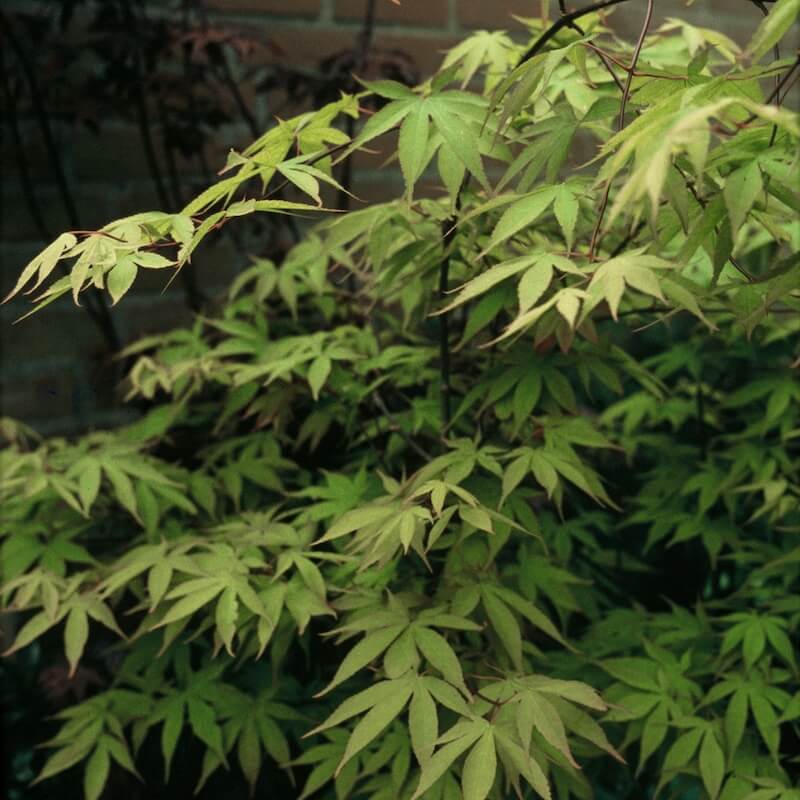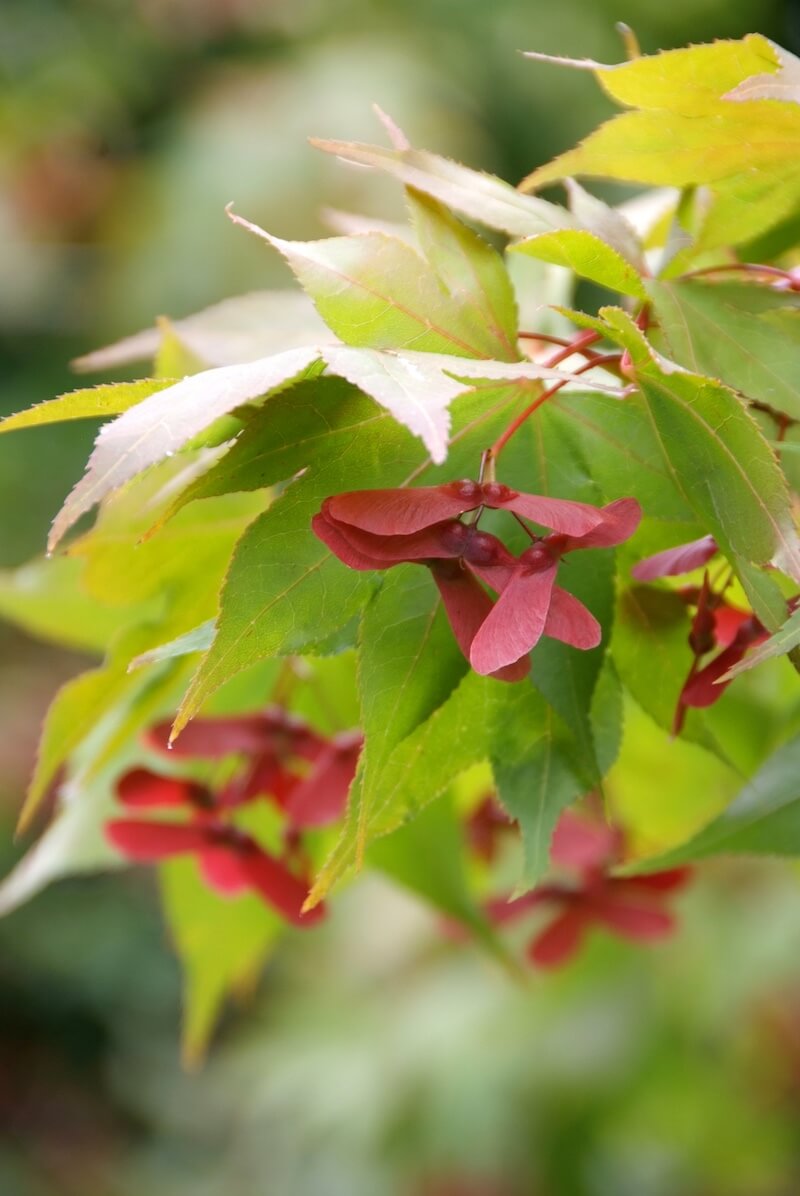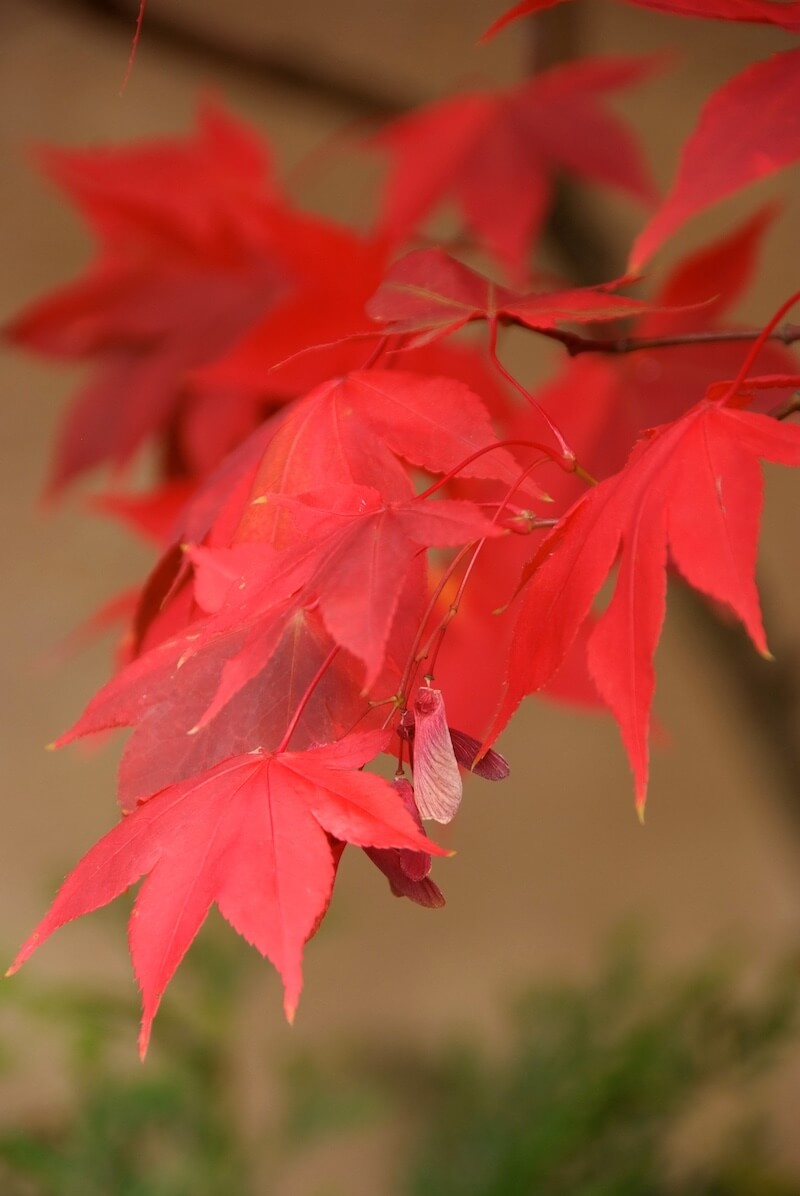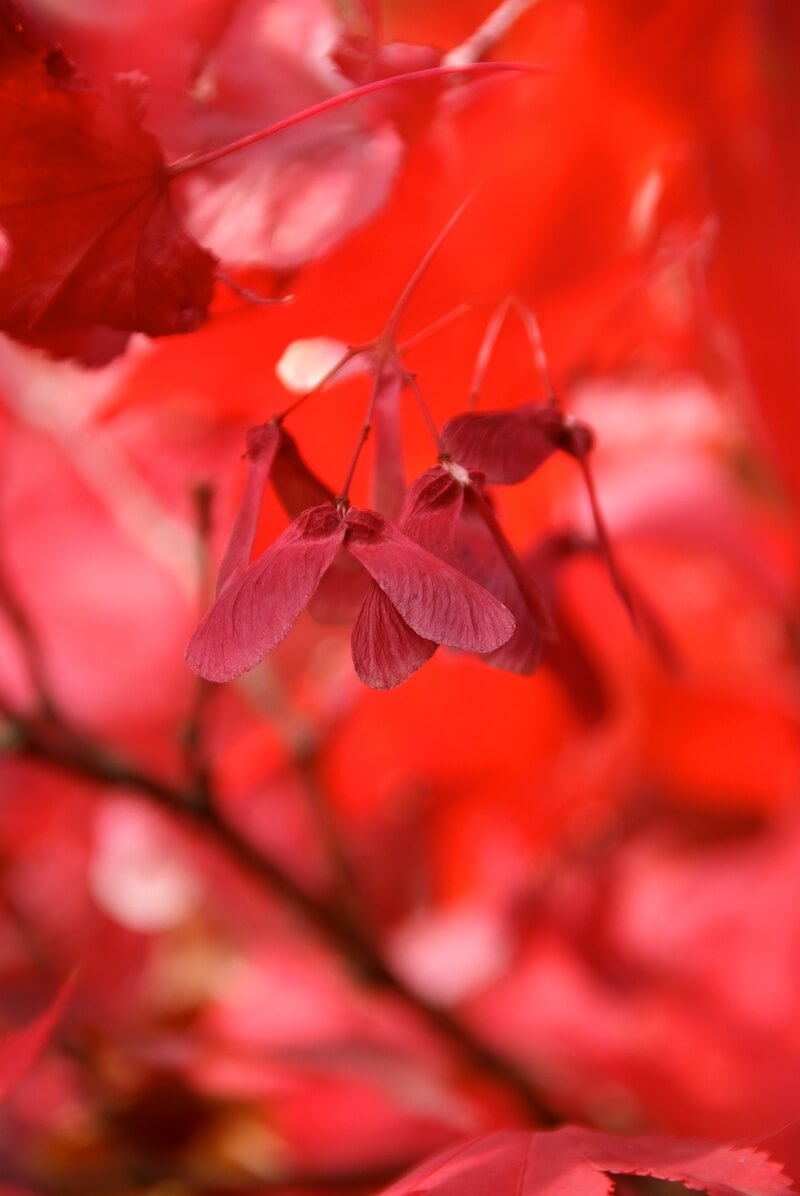
Position
- Prefers partial shade; benefits from morning sun with sheltered conditions in the afternoon
- Ideal beside water, in woodland gardens, or protected borders
- Best grown in a location sheltered from strong winds and harsh midday sun to prevent leaf scorch
Hardiness
- Hardy to approximately –20°C to –24°C (–4°F to –11°F)
- Fully suitable for most UK gardens, including those subject to cold winters
Soil
- Thrives in well-drained, moisture-retentive soil, rich in organic matter
- Performs best in soil improved with compost or leaf mould
- Avoid waterlogged or excessively dry soils
- Prefers neutral to slightly acidic soil
- Will tolerate mildly alkaline soil if improved with organic material; best autumn colour achieved on acid to neutral soils
- Grab a soil test kit and ensure the perfect conditions for growth
Height
- Typically grows to 4–6 metres (12–20 feet) tall after 5–10 years
- Forms a broadly upright shrub or small tree with a graceful outline
Seasons of Interest
Additional Notes
- Mulch annually with compost or leaf mould in spring to maintain moisture and feed roots
- Water thoroughly in prolonged dry spells, especially when young or container-grown
- Prune lightly in winter or early spring to remove dead or crossing branches—heavy pruning is rarely required
- Protect young plants from late spring frost and strong winds
- Can be grown in large containers if provided with regular water and feeding
Acer palmatum Osakazuki - The Best Japanese Maple for Autumn Colour!
If you’re searching for a small tree that delivers vivid colour and graceful beauty, the Acer palmatum Osakazuki Japanese maple could be your perfect match. Known for its brilliant scarlet in autumn and elegant, lobed leaves, this large shrub or small deciduous tree brings impact to any garden. Whether you’re growing it in a large container or giving it pride of place in your borders, this cultivar consistently impresses.
What Makes Acer Palmatum Osakazuki So Special?
Acer palmatum Osakazuki is a striking cultivar prized for its spectacular autumn foliage and graceful form. Its seven-lobed leaves emerge as bright green in spring and hold their colour well through summer. But it’s the transformation in autumn that makes this Japanese maple so memorable. As temperatures drop, the foliage turns brilliant orange-scarlet, culminating in a dazzling display of red and orange hues.
This cultivar forms an open habit with a balanced, rounded shape. Whether you’re using it as a focal point in the garden or growing it in a large container, its presence is both refined and bold. Recognised by the Royal Horticultural Society (RHS) for its outstanding qualities, Acer palmatum ‘Osakazuki’ earns high praise for reliability and colour.
How Tall Does Osakazuki Grow and What Shape Will It Take?
This Japanese maple grows into a large deciduous shrub or small tree. You can expect a mature height and spread of around 4 to 6 metres. Over time, its branches develop into a pleasing, open habit that showcases the structure and seasonal interest.
Its upright growth is not leggy, and its canopy provides a graceful backdrop in mixed planting schemes. Whether in a border or a container, its form is easy to appreciate throughout the year. The lobed leaves and vibrant bark add texture and movement, especially when caught by the breeze.

When Does Osakazuki Show Its Best Autumn Colour?
Autumn is when Acer palmatum Osakazuki really comes alive. The foliage begins its colour change in late autumn, shifting from fresh green to brilliant orange-scarlet and finally a deep scarlet red. This vivid shift gives the garden a burst of warmth just as most plants are winding down.
The spectacular autumn colours hold well into the dormant season, making them a centrepiece long after the flowers have faded. For the brightest leaf colour, choose a site that receives morning sun and is protected from strong winds. A balance of sun and shelter helps prevent leaf scorch while enhancing the vibrant hues.
What Are the Ideal Conditions for Growing Japanese Maple Osakazuki?
Acer palmatum Osakazuki performs best in partial shade, although it can tolerate full sun in cooler areas. A shady spot in the afternoon is ideal in warmer regions, as it helps prevent stress from excessive exposure.
Soil is key to success. This cultivar thrives in moist but well-drained soil enriched with organic matter. A slightly acidic pH encourages healthy foliage and the best autumn colour. In heavier soils, add compost and grit to improve drainage and structure.
Can You Grow Osakazuki in a Large Pot?
Absolutely! Growing in a large container or a litre pot of at least 20 to 30 litres works well, particularly if garden space is limited. Container-grown trees are easier to move and offer more control over the type and conditions of the soil.
Use a loam-based compost mixed with ericaceous compost for acidity, and ensure excellent drainage by adding gravel or crocks to the base. Keep the pot well-watered during spring and summer, as lack of soil moisture can reduce leaf colour and cause stress.

How Often Should You Prune Japanese Maple Osakazuki?
Osakazuki is a low-maintenance tree that requires minimal pruning. It’s best to prune during the dormant season, typically in late winter or early spring before new growth begins. Focus on removing any dead, damaged, or crossing branches to preserve its graceful form.
Avoid heavy pruning, which can lead to leggy growth or reduce the quality of the autumn foliage. Keeping the canopy open helps airflow and reduces the risk of pests and disease.
How Do You Care for Osakazuki Throughout the Year?
In spring and summer, feed with a balanced fertiliser to support new growth and maintain leaf colour. Apply a thick layer of mulch around the base to conserve moisture, improve soil texture, and keep the roots cool.
During dry periods, especially in summer, monitor soil moisture closely. Japanese maples are susceptible to damage from both waterlogging and drought. In winter, protect container-grown plants from freezing temperatures by wrapping the pot or moving it to a sheltered spot.
What Problems Should You Watch Out For?
While generally resilient, Osakazuki can be susceptible to leaf scorch in exposed areas with intense sun or drying winds. Choose a position that offers shelter without deep shade.
Ensure the soil remains moist but well-drained. A lack of soil moisture or excessive exposure can lead to browning leaves or poor autumn colour. Pests and diseases are uncommon but may include aphids or verticillium wilt in rare cases.
Where’s the Best Place to Buy Japanese Maple Acer Palmatum Osakazuki?
You can purchase Japanese maple trees (Acer palmatum), including Osakazuki, from reputable nurseries or garden centres. Look for healthy specimens in a nursery container, ideally with strong root systems and good branching.
Autumn and early spring are the best times to plant. Buying early allows you to prepare the soil and place the tree in its ideal location before the growing season begins.
What Makes Osakazuki a Standout in Garden Design?
With its seven-lobed leaves, brilliant scarlet in autumn, and open, graceful form, Osakazuki makes an unforgettable impression. It works beautifully as a focal point in the garden or as part of a layered planting scheme with ferns, hydrangeas, or grasses.
Its structure holds visual interest through winter, and its colour makes autumn come alive. Whether used as a large shrub, small tree, or container feature, Acer palmatum Osakazuki always delivers impact and beauty.

From Darren’s Patch
There’s something genuinely magical about the way Acer palmatum Dissectum Garnet catches the light—its feathery leaves shimmer in garnet tones all summer, then explode into scarlet fire in autumn. I’ve grown this variety in a large pot near a shaded seating area where its colour softens the space and provides year-round interest. It asks for very little in return—just shelter from harsh sun and a bit of thoughtful watering during dry spells. What I love most is its natural, weeping shape that never needs fussing over. Whether you’ve got a quiet corner, a Japanese-inspired border, or a spot on the patio, this little tree brings structure and elegance like few others can.
![]()
Key Points to Remember
- Choose the right spot: Best in partial shade with shelter from wind
- Check your soil: Prefers well-drained soil, slightly acidic and rich in organic matter
- Autumn stunner: Expect brilliant orange-scarlet and red foliage in late autumn
- Container-ready: Ideal for a large container or litre pot with good drainage
- Minimal pruning: Only prune to remove dead or crossing wood in winter
- Water well: Keep soil moist, especially in spring and summer
- Protect from extremes: Avoid intense sun or exposed areas to prevent leaf scorch
- Buy wisely: Purchase from trusted suppliers for strong, healthy plants
- Adds garden drama: A striking focal point with vibrant autumn colour
- Low-maintenance gem: Reliable, tough, and rewarding with seasonal beauty
Acer palmatum Osakazuki thrives in partial shade, with well-drained, moisture-retentive soil that has been improved through the addition of organic matter, and prefers a neutral to slightly acidic pH. Hardy down to –20°C (–4°F) or lower, it grows 2.5–4 m (8–13 ft) in 5–10 years, producing green leaves that turn outstanding scarlet-red in autumn. With annual improvement, good garden hygiene, and a sheltered position, it delivers easy, spectacular colour and structure in UK gardens.
Want to learn about other shrub varieties? Read about Acer palmatum Dissectum Garnet here.
For more information on Shrubs for your garden, please click here.

Frequently Asked Questions
Q: What is Acer palmatum Osakazuki?
A: Acer palmatum Osakazuki is a highly regarded Japanese maple cultivar known for its spectacular autumn colour. This graceful small tree or large deciduous shrub features seven-lobed green leaves that transform into brilliant scarlet red in autumn. With an open habit and delicate foliage, it makes a stunning focal point in any garden. A classic example of a Japanese maple, Osakazuki is cherished for its vivid seasonal display and elegant form. It is best planted in moist but well-drained soil and benefits from partial shade to prevent leaf scorch, especially in more exposed UK gardens.
Q: How tall does Acer palmatum Osakazuki grow?
A: Over time, Acer palmatum Osakazuki can reach a height and spread of approximately 4–6 metres, forming a rounded shape with a graceful open canopy. It grows slowly, making it well-suited to smaller gardens, courtyards, or as a container specimen in a large pot. As a small tree or large shrub, it is manageable and requires minimal structural pruning. Its elegant proportions and vivid autumn foliage ensure year-round visual interest, mainly when used as a feature plant within mixed borders or Japanese-themed garden designs.
Q: What makes the autumn foliage of Osakazuki so special?
A: Acer palmatum Osakazuki is celebrated for its brilliant scarlet-red autumn foliage, considered among the best of all Japanese maples. In spring and summer, the tree bears bright green leaves with seven distinct lobes, which gradually intensify in colour as autumn approaches. As temperatures cool, the foliage turns vivid shades of red and orange, creating a truly spectacular autumn display. The vibrant colour is enhanced when the tree is grown in partial shade with consistent soil moisture. Its show-stopping leaf colour makes Osakazuki a prized cultivar for seasonal impact.
Q: Where should I plant Acer palmatum Osakazuki?
A: Choose a sheltered position with dappled or partial shade to protect the delicate foliage of Acer palmatum Osakazuki from strong winds and excessive sun. A shady spot with moist but well-drained, slightly acidic soil enriched with organic matter is ideal. Avoid exposed areas where the tree may be susceptible to wind damage or leaf scorch due to intense sunlight or low soil moisture. Adding a mulch around the base helps retain moisture and regulate temperature. While it can tolerate full sun in cooler regions, a semi-shaded position ensures the most vibrant autumn colour and healthiest growth.
Q: Can Acer palmatum Osakazuki be grown in a pot?
A: Yes, Acer palmatum Osakazuki can thrive in a large container, making it perfect for patios, terraces, or small urban gardens. Use a quality ericaceous compost or one enriched with organic matter, and ensure the pot has excellent drainage. Choose a container of at least 30–50 litres to accommodate growth and moisture needs. Water regularly to maintain consistent soil moisture and feed in spring with a slow-release product suitable for shrubs and trees. Re-pot every few years or refresh the top layer of compost to support long-term health and intense autumn colouration.
Q: How do I care for Acer palmatum Osakazuki throughout the year?
A: During spring and summer, ensure the plant receives adequate water, particularly in hot or dry spells, to prevent leaf scorch. Apply mulch annually in spring to retain soil moisture. Feed in early spring with a balanced, slow-release product designed for ornamental trees. Prune lightly during the dormant season, removing any dead or crossing branches. However, avoid heavy pruning, as this may encourage leggy growth. Monitor for pests and protect young plants from harsh frost. With proper care, Acer palmatum Osakazuki rewards with graceful form and spectacular autumn foliage year after year.
Q: How and when should I prune Acer palmatum Osakazuki?
A: Prune Acer palmatum Osakazuki only when necessary, ideally in late summer or during the dormant season (late autumn to winter) to avoid sap bleed. Focus on removing any dead, damaged, or congested growth to maintain its open, airy habit. Avoid shaping it too aggressively, as its natural form is one of its most attractive features. Over-pruning may result in leggy growth or stress the tree. For container specimens, light root pruning every few years can help rejuvenate growth, especially if it shows signs of becoming pot-bound.
Q: What soil conditions are best for Acer palmatum Osakazuki?
A: Acer palmatum Osakazuki prefers moist but well-drained soil that is slightly acidic and rich in organic matter. It does not thrive in waterlogged or very dry conditions. To maintain optimal soil moisture, especially during dry spells, apply a generous layer of mulch each spring. Avoid chalky or alkaline soils, as they can cause nutrient deficiencies. Consistent soil moisture without waterlogging is key to preventing leaf scorch and promoting vibrant autumn colour. In containers, use a loam-based compost mixed with ericaceous compost for the best balance of nutrients and drainage.
Q: Where can I buy Acer palmatum Osakazuki in the UK?
A: Acer palmatum Osakazuki is widely available from reputable UK garden centres, specialist nurseries, and trusted online retailers. Often sold in nursery containers or larger litre pots, it’s advisable to select a healthy specimen with good structure and strong root development. Online suppliers usually offer a wider range of sizes and cultivars, while visiting a local nursery allows you to assess the plant in person. Whether you’re seeking a small shrub or a more established tree, Osakazuki remains a popular choice for those wishing to buy a Japanese maple with spectacular autumn colour.
